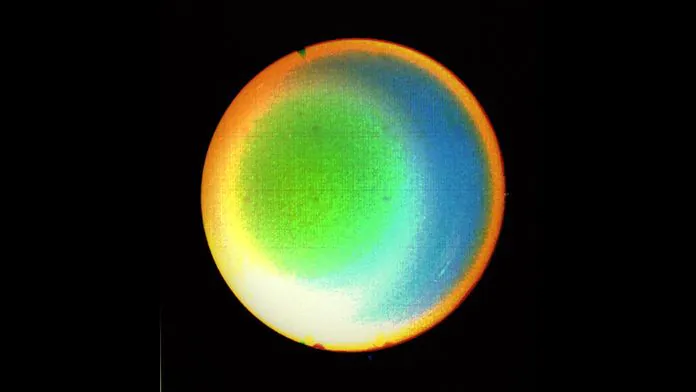© ROOT-NATION.com - Use of content is permitted with a backlink.
For a long time, the opinion prevailed in the scientific community that Uranus and Neptune are ice giants rich in frozen water. However, scientists have recently conducted a new study, which suggests that these planets may also contain tons of methane ice. At most, these results may help unravel the mystery of their formation.

Much remains unknown about Uranus and Neptune. So far, only one spacecraft – “Voyager-2” – has reached these icy giant planets, and this happened back in the 1980s. So currently, scientists have only an approximate idea of the composition of these ice giants – for example, that they contain a significant amount of oxygen, carbon and hydrogen.
To learn more about what Uranus and Neptune are made of, astronomers based on data collected by Voyager 2 and ground-based telescopes developed models that would match the physical properties of the planets. According to most models, these planets have a thin shell of hydrogen and helium, below that is a layer of frozen water and ammonia, and below that is a central rocky core. They got the name “ice giants” because of the huge amount of water ice. According to some estimates, these planets may contain 50,000 times more water than the oceans on Earth.

But the authors of the new study see certain flaws in these models – they do not take into account the way these planets formed. As Uranus and Neptune formed from a cloud of dust and gas, they absorbed planetesimals, reminiscent of modern comets that originate in the Kuiper Belt beyond Neptune’s orbit. However, unlike the supposedly water-rich ice giants, a large part of these planetesimals was rich in carbon. So scientists ask a completely logical question, how can an ice giant be formed from building blocks that contain little ice?
To solve the apparent paradox, a team of scientists developed thousands of models of the internal structure of Uranus and Neptune. The algorithm they used “starts to select an appropriate composition for the surface of the planet, and gradually moves inward to the centre point of the planet.” They looked at several chemicals, including iron, water and methane, a major component of natural gas, and then tried to determine which model most closely resembled real ice giants based on characteristics such as radius and mass.
The models that best met their criteria were models that contained methane, either in a solid state or in a “slurry” that forms a thick layer between the hydrogen-helium shell and the water layer. In some models, methane accounted for 10% of the planet’s mass.

Methane is the key to solving this paradox. Ice could have formed when hydrogen in growing planets reacted chemically with carbon in planetesimals. Such reactions take place at high temperatures and extremely high pressure, and exactly such conditions, according to scientists, were observed on these planets during their formation. Of course, these data still need to be carefully checked, which is not so easy. But it is on the list of plans for several future missions by NASA and other space agencies that are going to explore Uranus.
Read Also:
- The Hubble Space Telescope took a picture of a spiral galaxy in the constellation Apus
- The Invincible review: These space boots are made for walkin’


